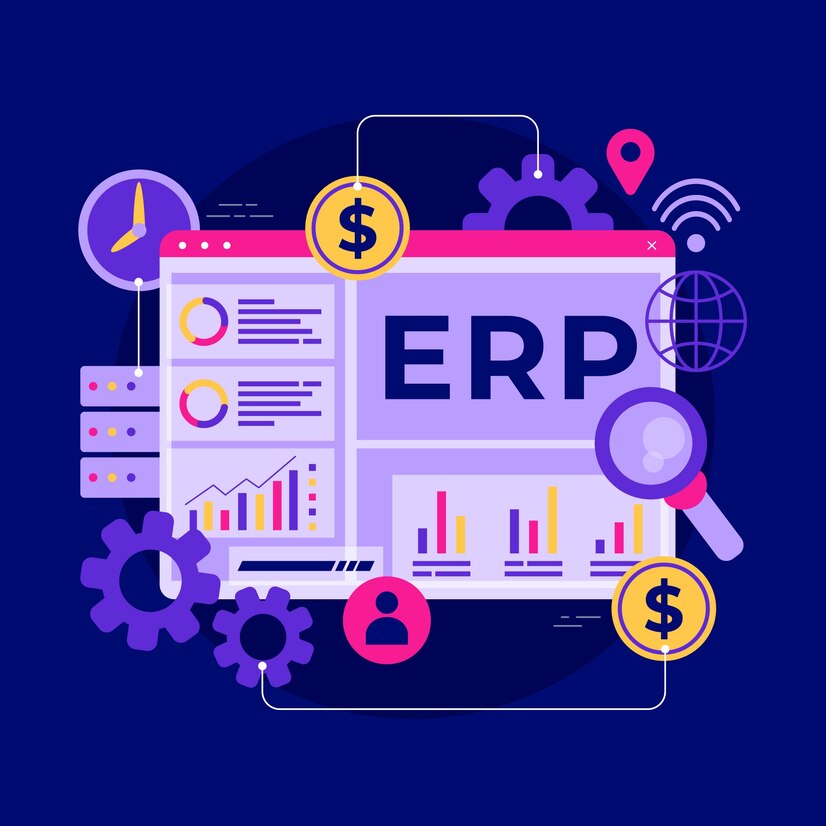Transforming ERP Sales in the Logistics and Wholesale Sectors: Navigating the Digital Frontier
In the complex and highly competitive world of Enterprise Resource Planning (ERP) solutions, standing out requires more than just an excellent product. It demands a strategic approach to sales and marketing that can effectively navigate long sales cycles and connect with decision-makers at precisely the right moments. This is the story of how a specialised ERP provider in Germany transformed its customer acquisition strategy from non-existent to highly effective, driving remarkable growth in the logistics and wholesale sectors.
The Challenge: Overcoming Long Sales Cycles and Creating Urgency
Our client, a niche ERP provider, had long relied on the personal connections of its owner and serendipitous encounters for business development. While this approach yielded some success, it was far from scalable or sustainable. The main challenge was navigating the inherently lengthy sales cycles associated with the ERP system. Identifying prospective customers at the right moment, they were considering an ERP purchase was a significant hurdle. Furthermore, creating a sense of urgency among decision-makers and accurately determining the suitability of the client’s specialised ERP solution for potential customers added layers of complexity to their sales strategy.
The ideal customer profile for the client encompassed companies within the logistics and wholesale industries undergoing significant changes, such as mergers, acquisitions, or leadership shifts. These companies often faced specific challenges in areas like return goods management and wholesale operations, areas in which the client’s ERP system excelled.
Crafting the Strategy: Leveraging Data for Precision Targeting
To address these challenges, we developed a multi-faceted strategy that leveraged the client’s existing customer database and detailed market insights. The first step was reverse-engineering the profiles of decision-makers, relevant industries, and the technologies employed by existing clients. This deep dive revealed a pivotal insight: ERP system purchases are often triggered by corporate events like acquisitions or mergers due to the ensuing need for consolidation processes.
Step 1:
Identifying Trigger Events
We identified key trigger events that typically led to ERP purchases. These included shareholder changes, management shifts, and other significant corporate announcements. By monitoring these events, we could pinpoint companies at critical decision-making junctures.
Step 2:
Creating a Targeted Cluster
Using comprehensive company data, including job vacancy information to glean insights into required technologies, we created a targeted cluster of decision-makers. This cluster was aligned with industries prone to specific operational pains addressed by the client’s ERP system.
Step 3:
Personalized Outreach
With our targeted list in hand, we crafted personalised outreach campaigns that spoke directly to the needs and pain points of each potential client. These campaigns emphasised the unique benefits of the client’s ERP system in addressing specific challenges related to logistics and wholesale operations.
Implementing the Plan: Engaging Decision-Makers
The strategic approach involved a series of meticulously planned steps to engage decision-makers at the right moments:
Step 1: Market Analysis and Segmentation
We conducted a thorough market analysis to segment companies based on their likelihood of needing an ERP system. This included tracking corporate events, monitoring industry trends, and analysing job vacancy data.
Step 2: Crafting Compelling Messaging
The messaging for our outreach campaigns was crafted to highlight the urgency of adopting a new ERP system in light of recent corporate changes. We emphasised how the client’s ERP solution could seamlessly integrate with their existing processes, streamline operations, and address specific challenges.
Step 3: Multi-Touchpoint Engagement
The outreach campaigns were designed as multi-touchpoint engagements, including personalised emails, follow-up calls, and informational webinars. This approach ensured sustained engagement and built trust with potential clients.
Achieving Remarkable Outcomes: A Surge in Leads and Engagement
The results of our strategic approach were nothing short of remarkable. Within 12 months, the client generated over 350 high-quality leads. This significant increase in engagement allowed the client to connect with potential customers at critical decision-making junctures, greatly enhancing their ability to drive sales.
Lead Generation
The targeted strategy led to the generation of over 350 leads within a year, far surpassing initial expectations.
Increased Engagement
The personalised and data-driven approach resulted in higher engagement rates, with decision-makers actively participating in webinars and responding to outreach efforts.
Market Presence
The innovative strategy elevated the client’s market presence, positioning them as a reliable and forward-thinking ERP provider in the logistics and wholesale sectors.
Beyond the numbers, the strategic shift had a profound impact on the client’s business development capabilities. They moved from relying on personal connections to a scalable and sustainable model that leverages data-driven insights and targeted marketing. This transformation allowed them to navigate the complexities of ERP sales cycles more effectively and create a sense of urgency among decision-makers.
The Path Forward: Sustaining Growth and Innovation
The success of this campaign underscores the importance of strategic planning and precision targeting in the ERP sector. For other businesses facing similar challenges, the key takeaways include:
Leveraging Data
Utilizing existing customer data and market insights can significantly enhance targeting accuracy and engagement rates.
Identifying Triggers
Monitoring corporate events and identifying key trigger points can help pinpoint potential customers at critical decision-making moments.
Personalized Outreach
Crafting personalised and relevant messaging that addresses specific pain points can create a sense of urgency and drive engagement.
